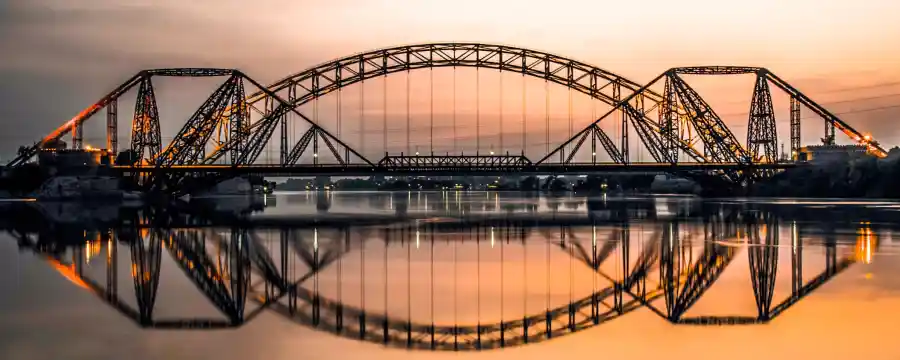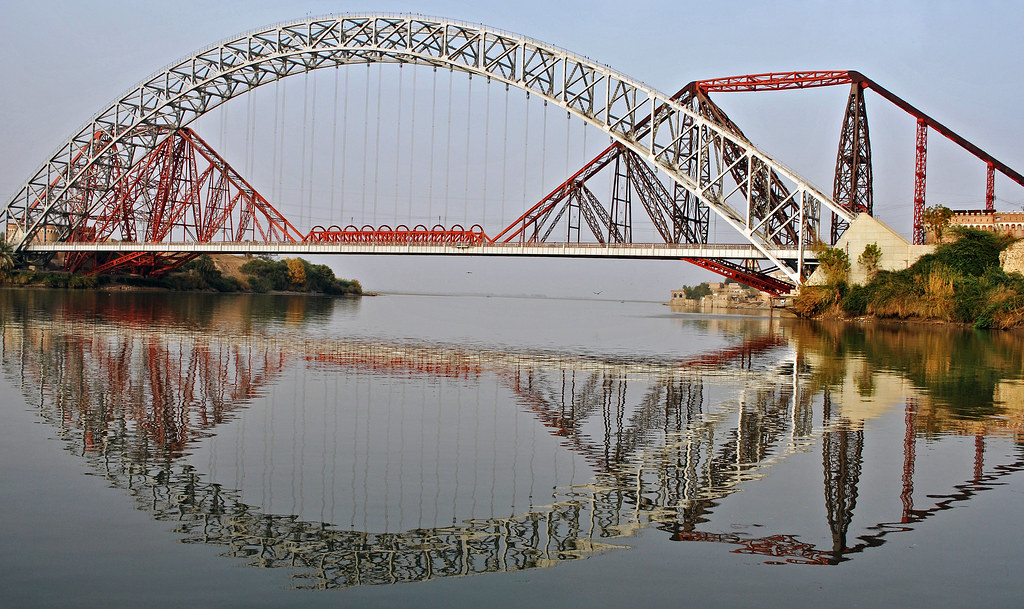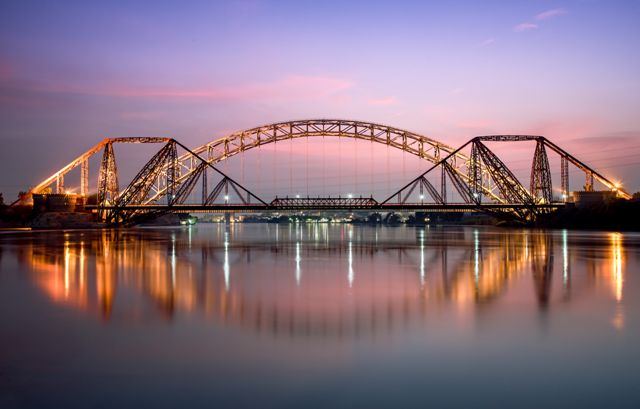Lansdowne Bridge - Sukkur

The Lansdowne Bridge Rohri is a former railway bridge over the Indus River in Sindh, Pakistan. A marvel of 19th-century engineering, the "longest 'rigid' girder bridge in the world" at that time, it was begun in 1887 and inaugurated in 1889. It was designed by Sir Alexander Meadows Rendel; the girder work, weighing a massive 3,300 tons, was manufactured in London by the firm of Westwood, Baillie and erected by F.E. Robertson, and Hecquet. The bridge permitted trains from Karachi towards the north to cross the Indus without using a ferry service, and railway link between Lahore, in the heart of the granary of British India, and the port of Karachi on the Arabian Sea.
Lansdowne bridge is a highly significant early example of a large cantilever truss bridge. Some truss members have a tubular-like construction that is reminiscent of the Forth Rail Bridge. One of the unusual features of this bridge is how the trussed vertical main posts bow outward in the mid section. In addition, the main posts are inclined inward and are not true vertical. The bridge features a distinctive suspended span that looks nothing like the rest of the bridge, as it is a riveted double-intersection Pratt style truss span and it looks like a less unusual simple span European style truss bridge.
Many engineers described this bridge as ugly when it was first constructed. The bridge certainly has a striking appearance, and it is truly one of the most unique looking bridges in existence anywhere.
Some sources list the span length of this bridge as 790 feet, this refers to clearance between abutments but because of the unusual design of this bridge, the structural span length between main posts of the bridge is 820 feet.
Today, the bridge sits next to another bridge, the Ayub Bridge, which was built in 1962. That bridge today carries railway traffic, which originally was on the Lansdowne Bridge.


